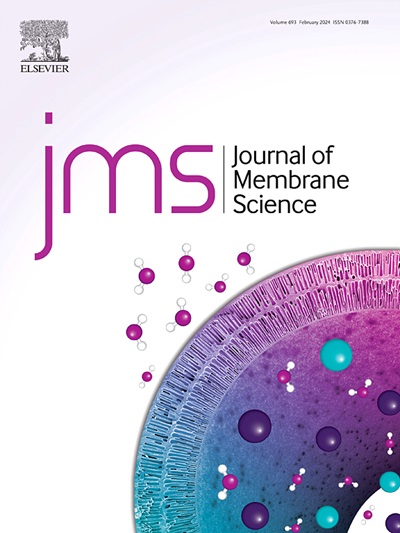Single pass tangential flow filtration (SPTFF) for concentration and purification of AAV clarified cell lysate
IF 8.4
1区 工程技术
Q1 ENGINEERING, CHEMICAL
引用次数: 0
Abstract
The rapid development of adeno-associated viral vectors (AAV) to treat genetic disease has placed increased emphasis on the design of efficient downstream manufacturing processes. This study investigated the potential of using single pass tangential flow filtration (SPTFF) as a novel means of concentrating and purifying AAV clarified cell lysate (CCL). AAV stability studies revealed the shear-sensitive nature of the AAV capsids, with evidence of aggregation and fragmentation following repeated passages through a peristaltic pump (as would occur during batch ultrafiltration). SPTFF experiments focused on first identifying the membrane(s) that permitted high yield of AAV (negligible sieving into the permeate) along with substantial host cell protein (HCP) removal. Experiments were then performed at various permeate fluxes, which revealed that stable SPTFF processes can be achieved by operating below a critical flux for fouling (Jfoul). 300 kDa regenerated cellulose (RC) membranes were identified as optimal for this application, given their ability to provide complete AAV retention with high removal of HCP (>90 %) when operated below Jfoul. The critical flux during SPTFF was increased by preconditioning the CCL through a positively-charged adsorptive filter, which reduced the concentration of foulants prior to SPTFF. These studies provide the first demonstration of SPTFF for the concentration and purification of AAV clarified cell lysate while minimizing shear exposure.

单道切向流过滤(SPTFF)用于AAV澄清细胞裂解液的浓缩和纯化
腺相关病毒载体(AAV)治疗遗传病的快速发展使得高效下游制造工艺的设计日益受到重视。本研究探讨了使用单道切向流过滤(SPTFF)作为浓缩和纯化AAV澄清细胞裂解物(CCL)的新方法的潜力。AAV稳定性研究揭示了AAV衣壳的剪切敏感性,有证据表明,在通过蠕动泵的重复通道后,AAV衣壳会聚集和破碎(就像在批量超滤过程中发生的那样)。SPTFF实验的重点是首先鉴定出一种膜,这种膜允许高产量的AAV(极少筛入渗透液)和大量的宿主细胞蛋白(HCP)去除。然后在不同的渗透通量下进行了实验,结果表明,在低于临界污染通量(Jfoul)的情况下,可以实现稳定的SPTFF过程。300 kDa的再生纤维素(RC)膜被认为是该应用的最佳选择,因为当在6℃以下操作时,它们能够提供完全的AAV保留和高HCP去除率(90%)。通过带正电的吸附过滤器对CCL进行预处理,提高了SPTFF过程中的临界通量,降低了SPTFF前的污染物浓度。这些研究首次证明了SPTFF可以在最小化剪切暴露的同时浓缩和纯化AAV澄清细胞裂解液。
本文章由计算机程序翻译,如有差异,请以英文原文为准。
求助全文
约1分钟内获得全文
求助全文
来源期刊

Journal of Membrane Science
工程技术-高分子科学
CiteScore
17.10
自引率
17.90%
发文量
1031
审稿时长
2.5 months
期刊介绍:
The Journal of Membrane Science is a publication that focuses on membrane systems and is aimed at academic and industrial chemists, chemical engineers, materials scientists, and membranologists. It publishes original research and reviews on various aspects of membrane transport, membrane formation/structure, fouling, module/process design, and processes/applications. The journal primarily focuses on the structure, function, and performance of non-biological membranes but also includes papers that relate to biological membranes. The Journal of Membrane Science publishes Full Text Papers, State-of-the-Art Reviews, Letters to the Editor, and Perspectives.
 求助内容:
求助内容: 应助结果提醒方式:
应助结果提醒方式:


